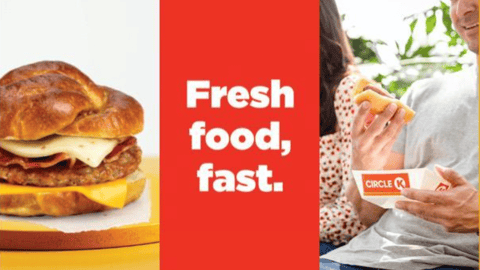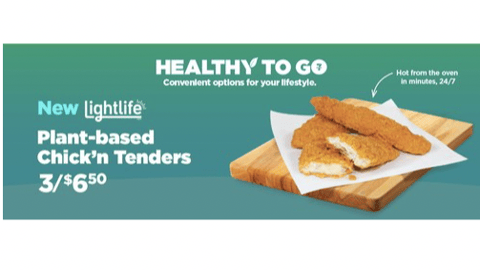No stove, no problem
As convenience’s core categories shift (and in some cases decline), the industry is increasingly embracing foodservice to attract more customers and drive revenue across all the dayparts.
Major players across Canada, including 7-Eleven, Circle K and Parkland, are investing heavily in foodservice, with a focus on freshness, variety and quality, and often going head-to-head with quick service restaurants in the competition for consumers’ dollars.
While some independent operators are looking at foodservice as a core means to differentiate their business, for many, especially those with limited space, time and resources to invest in and run the equipment and technology needed to maintain a kitchen, getting into the foodservice game can be a challenge.
So, here’s some food for thought on a few ready-made and emerging foodservice possibilities ideal for space- and culinary-challenged operators.
1. Become a franchisee
Karen Weldman is a busy woman. As VP, new business development with Montreal-based franchising giant MTY Food Group, she spearheads the effort to establish two of her company’s top-selling express food brands—Country Style and Mr. Sub—as market leaders in convenience stores and gas stations across Canada.
“It starts with me talking to the owner and sending the information package (and) there will always be follow up questions,” says Weldman. “I field a lot of calls.”
Operators interested in MTY’s turnkey brand franchise kiosks—either a stand-alone, bean-to-cup coffee operation or one twinned with sub sandwiches—require site visits, interviews and training.
“They need to manage it,” says Weldman. “It’s a business within a business. You don’t want the person pumping gas or handling the register to also be making sandwiches.”
Despite the ongoing pandemic, she has added 17 new express locations to her portfolio this year, bringing the total number to more than 300 across Canada, the vast majority branded fuel partners and independent convenience stores in rural areas.
MTY is one of several express coffee and foodservice franchisers proving popular among independent c-stores in Canada.
“The game has changed from the days when the local gas station and convenience stores were the only game in town on Sunday,” says Weldman. “To compete now it is critical for convenience stores to have food and coffee. They need to establish that point of difference.”
In addition to having a good location, as well as a willingness to invest capital into upgrading your store, Weldman says retailers require very little space to execute fresh food programs. As an example, the Country Style/Mr. Sub express kiosk takes up only 500 sq. ft. (250 sq. ft. front counter plus 250 sq. ft. back prep area). This multi-branded fresh food program continues to experience robust growth within the petroleum and convenience channels, addressing all day parts and satisfying hungry customers from breakfast through dinner and late-night snack attacks.
At a minimum, Weldman recommends the self-serve coffee kiosk, which is equipped to make a fresh-ground cup of coffee in one minute and sell baked goods that can be kept in the freezer until needed (to help manage waste).
According to the Coffee Association of Canada, two-thirds of Canadian adults drink an average of 3.2 cups of joe each day. Total annual national consumption is 15 billion cups a year: Not surprisingly, branded coffee is the biggest selling grab-and-go item in the foodservice sector.
“It’s very lucrative if done properly,” says Weldman. “There’s not another product in an operator’s store with the same margins.”
2. Find a program partner
Another popular option for c-store operators getting a foothold in foodservice is to join one of the ready-to-eat products programs offered by national and regional food manufacturers and distributors. These groups supply retailers, restaurants and theatres with everything from sandwiches and sliced meats to cooked meals and bakery goods. Plus, they’re already supplying other key categories, from grocery to confectionary and household products.
“Demand for ready-to-eat foods just keeps going up,” says Serge Nadeau, VP, development at Beaudry & Cadrin.
Several recent acquisitions have transformed the Montreal-based firm into a significant independent food manufacturer and distributor for c-stores and foodservice in Eastern Canada, serving 1,200 independent c-stores in Quebec, as well as Loblaw-linked corporate stores across Atlantic Canada.
Other major players in the space include American-owned Tyson Foods (their Jimmy Dean grab-and-go breakfast sandwich program is a morning favourite), Cagrill and Edmonton-based Wallace & Carey, which also partners with Beaudry & Cadrin to fulfill c-store operator needs across Canada.
Through many partners, retailers can avail of loyalty programs, rebates and money-saving incentives for foodservice products, recipes, equipment, tools and support in the convenience channel.
Beaudry & Cadrin is popular in Quebec for its turnkey fresh foodservice program, La Cour aux Saveurs. Some 200 (mostly independently owned) stores are currently enrolled in the program.
With a minimum of space and a roughly $15,000 investment, the Cour aux Saveurs foodservice program promises to help operators—both through training and binders filled with instructions and recipes made by a corporate chef, including regional dishes—to turn their store into a “bistro” that serves everything from sandwiches made with baguette bread to croissants and wraps; raw veggies and dips; grapes and cheese; yogurt parfaits; cooked meals like lasagna and shepherd’s pie; and carry-out lunch boxes.
“Everything is thought out with quality and convenience in mind,” Nadeau says of the program, which was first introduced at a single store in the Montreal region in 2013. “We’ve continued to refine and develop the concept with new recipes and better packaging that gives longer shelf life and is easier for eating when driving. We always think about the consumer.”
In addition, Beaudry & Cadrin has about 170 stores enrolled in its M&M Express program, which launched in 2018 and offers 75 frozen products, including 45 heat-and-eat meals.
READ: Parkland Corporation buys M&M Food Market
Nadeau notes that the fresh and frozen foodservice offerings are finding favour with consumers in Quebec, where convenience stores also now sell good-quality wines and beers: “More and more, especially since the pandemic, c-stores are becoming a destination where people can go to get everything they need for a healthy lunch or snack or an evening meal.”
3. Go local
It can require a little extra legwork, but many independent operators are carving a foodservice niche by partnering with local food companies that share the same ethos and appreciation for quality food.
For instance, Toronto-based Runner Market partners with local empanada company Gaucho Pie Co., while also sourcing its popular beef patties from Street Bites, which, like Runner, places a premium on quality ingredients.
This approach allows operators to test and offer a variety of menu items with very little investment beyond proper hot/cold storage and display.
4. Embrace vending
These days, vending foodservice options go well beyond pre-wrapped sandwiches and a bag of chips. Visit Japan and you’ll see a world of inspiration, from steaming noodles to cooked rice. In the U.S., players like Burritobox, Farmer’s Fridge and Chowbotics’ Sally the robotic salad maker are a convenient source for fresh foodservice.
Closer to home, Toronto-based PizzaForno is making it easier for smaller footprint stores to feed hungry customers. The company’s 58-sq.-ft. PizzaForno kiosks are now located outside of 34 locations across Canada, including several convenience stores, providing 24-7 access to a menu of eight artisan pizzas cooked in an automated oven in just three minutes. Customers can also opt for a cold pizza to cook at home.
For convenience operators, the effort involves keeping the machine stocked, which can be a daily or every other day task, depending on sales. PizzaForno handles maintenance and service, as well as credit and debit reconciliation.
These vending machines attract customers who love the novel idea, while at the same time boosting sales across other convenience categories, such as beverages and snacks.
5. Ghost kitchens
As the world moves towards electric cars and tobacco sales decline, trend anticipator Tim Tang sees prepared foods as an essential source of revenue for convenience store operators of all sizes and stripes.
He says independents without the physical space and/or financial wherewithal to buy a franchise or join a program might want to consider tapping into an emerging foodservice concept: ghost kitchens.
According to Tang, many restaurant operators are using ghost kitchens—locations that make food for home deliveries by third parties like DoorDash and Uber Eats—to reach customers.
That trend increased dramatically during the pandemic, when restaurants were ordered shut, and continues due to severe labour shortages in the service industry.
Tang says that model is challenged by concerns over the security of food delivered by private operators and the meagre profits those drivers earn from making deliveries to addresses across cityscapes. However, convenience store operators could be a solution.
“C-stores have the footprint in the community as convenient and trusted points of presence where consumers already go to gas up and get food and beverages,” says Tang, director of enterprise solutions for Hughes Network Systems, a Maryland-based, satellite internet networks and services provider with more than 1 million subscribers. “They could leverage that strength by becoming a distribution site for restaurant food.”
Under this model, Tang says operators could offer dozens of brands of fresh food from ghost kitchens, providing a welcome and profitable addition to traditional convenience channel categories.
“It could crack open and unleash the c-store’s access to customers,” he says, adding: “What operators need—and this is where it gets interesting, but not that hard—is to participate in the online ordering phenomenon by using technology that’s already out there and become a third-party delivery service knockoff.”
This article originally appeared in the November/December 2021 issue of Convenience Store News Canada.










